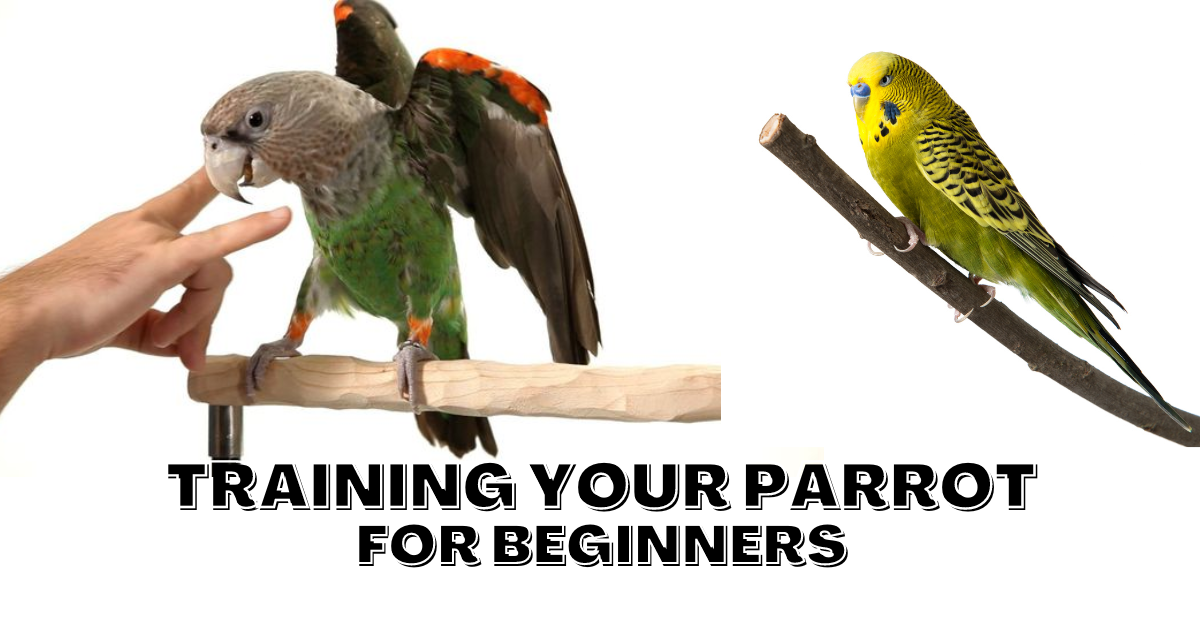

Parrots are intelligent and beautiful creatures. Some studies have shown that some parrot species have levels of intelligence comparable to those of a four-year-old child! Yet it is obvious that people have no concept of how to harness the capacity of a parrot to learn.
So I thought I was going to shed some light on how I took some dog training techniques to get parrots to respond much faster than traditional methods of training.
It’s called shaping this technique. Shaping is a method of practice for parrots to think.
It doesn’t encourage them with food or punish parrots wrongly for doing conduct. On this principle, instead, does it work?
Parrots will continue to do even more fun conduct to give them happiness and will continue until the conduct does not give them happiness more and more.
I don’t just shoot my hand in front of them, I force them off the perch when I train a parrot, to get up on my side. Perhaps the parrot won’t move up, after all.
The parrot can be sleepy, upset, and unintended for several other reasons, or not to be removed from his food bowl.
Instead, I want to recompense parrots for their free will coming to me.
I like to train myself in parrot which gives enjoyment to him coming to me. This is what I mean. This is what I mean.
Let’s say our parrot plays happily in his cage’s top, and you would like to get him trained on his side.
Put your hand about 12-24 centimeters from your parrot and look at what it does. Is it still further back? If so, you should also try to ensure your parrots show relaxed body language until you are far enough away.
Keep asking your parrot to touch your hand gently before it gives it its delights until it actually steps up your hand.
But be cautious, you may not have faith in parrots. So don’t think the training is achieved the first time your parrot steps on your side.
If you coax them into your side, parrots will feel betrayed and take them away quickly.
Let your pet step on the side instead without picking up your parrot and gradually work to reward you for allowing your pet to pick him up an inch of the floor, then two, three, four, etc. until every moment you walk to his cage, he runs to you waiting to get his treatment.
This is how parrots are trained to fix the issue. It teaches you to find out what you want to do and makes it much simpler to train other behaviors.
Are parrots easy to train?
Parrots can be trained, but whether or not they are easy to train depends on several factors, including the species of the parrot, the individual bird’s personality, the owner’s level of experience with training, and the training methods used.
Some species of parrots, such as African Greys and Amazons, are known for their intelligence and ability to learn complex tasks, while others, such as budgerigars, may be easier to train for basic behaviors like stepping up onto a perch.
However, even within a species, individual parrots can have different temperaments and learning styles, making some easier to train than others. Additionally, training requires consistency, patience, and positive reinforcement techniques, which may take time and effort to learn and apply effectively.
In summary, while some parrots can be easy to train for basic behaviors, training more complex tasks can require significant time and effort, and success can depend on a variety of factors.
7 Basic Bird Training Tips for Beginners
- Start with Basic Commands: Begin with simple commands such as “step up,” “step down,” and “come here.” Once your bird has mastered these basic commands, you can move on to more complex ones.
- Use Positive Reinforcement: Reward your bird with treats and praise when it performs a command correctly. This will help your bird associate positive feelings with the training and encourage it to repeat the behavior.
- Be Patient: Training a bird takes time and patience. Don’t get frustrated if your bird doesn’t pick up a command right away. Keep practicing and rewarding your bird for its efforts.
- Keep Training Sessions Short: Birds have short attention spans, so keep training sessions brief and frequent. Aim for several 5-10 minute sessions per day.
- Train in a Quiet Environment: Birds can be easily distracted, so train your bird in a quiet environment where it can focus on the training.
- Be Consistent: Use the same command and reward every time you train your bird. This will help your bird understand what is expected of it and make training more effective.
- Use Clicker Training: Clicker training is a popular method of training birds. It involves using a clicker to mark the behavior you want your bird to learn, followed by a treat as a reward. Clicker training is a gentle and effective way to train birds.

Leave a Reply